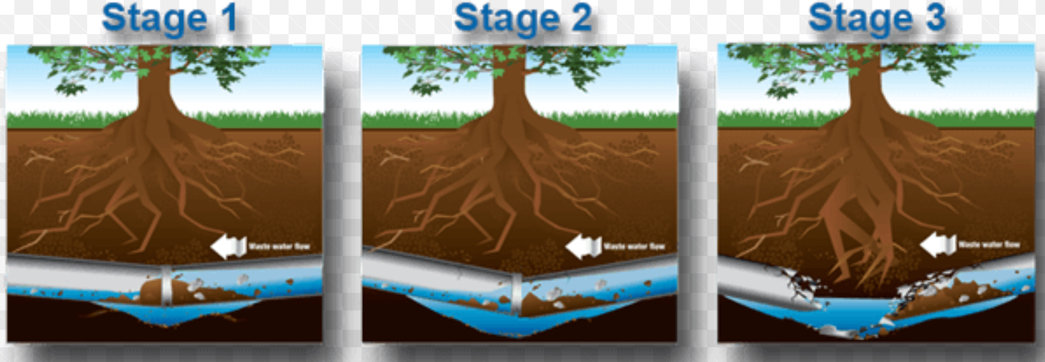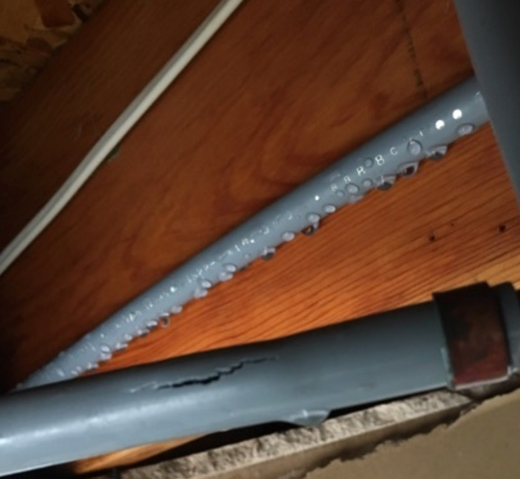Older Tampa homes often have a charm that new construction simply can’t match. Better yet, smart buyers can often secure great Tampa home deals when investing in an older home. Of course, your thriftiness may end up backfiring if you find yourself saddled with serious structural issues. Aging plumbing systems, in particular, can lead to serious stress and added expenses.
Worse still, some aging Tampa plumbing systems can create health risks for you and your family. Unfortunately, many Tampa homeowners simply don’t know what kinds of problems to look out for. If you would like to learn more about the kinds of plumbing issues that affect older homes, keep reading. This article takes a look at three common Tampa plumbing problems.
1. Galvanized Pipes
 Galvanized pipes, which often still exist in homes constructed prior to 1960, are steel pipes coated with a layer of zinc. This zinc creates a protective barrier against corrosion from the water, which would otherwise soon corrode the steel. When first introduced, plumbers embraced galvanized pipes as a safe and affordable alternative to dangerous lead pipes.
Galvanized pipes, which often still exist in homes constructed prior to 1960, are steel pipes coated with a layer of zinc. This zinc creates a protective barrier against corrosion from the water, which would otherwise soon corrode the steel. When first introduced, plumbers embraced galvanized pipes as a safe and affordable alternative to dangerous lead pipes.
Unfortunately, as the years go on, galvanized pipes begin to lose their protective coating of zinc. This allows corrosion to build up on the inside of the pipe, restricting flow and weakening the pipe’s sidewalls. Even more alarmingly, these patches of corrosion provide the perfect attachment point for any lead that happens to pass through your pipe.
Some of this lead comes from the zinc coating itself. The naturally occurring zinc used to coat galvanized pipes often contained trace amounts of lead. Even more lead may be hiding inside of your galvanized pipes if your home ever contained lead pipes. No matter how long ago they have been removed, those lead pipes could have left deposits on the walls of your remaining galvanized pipes.
You can identify galvanized pipes by a simple test. Just use a knife to scratch the outside of the pipe. If this reveals a silver-grey color – and if a magnet readily sticks to the pipe – you have galvanized pipes. Contact a professional plumber to talk about having these dangerous pipes replaced.
2. Sewer Line Belly
 All Tampa homes on municipal water supply systems contain a sewer line, which runs beneath your lawn from your home to the city sewer pipe. Ideally, the sewer line should slope gently away from your home, in order to help waste water move quickly and efficiently out of your system. Yet, over time, sewer lines often develop the problem known as bellies.
All Tampa homes on municipal water supply systems contain a sewer line, which runs beneath your lawn from your home to the city sewer pipe. Ideally, the sewer line should slope gently away from your home, in order to help waste water move quickly and efficiently out of your system. Yet, over time, sewer lines often develop the problem known as bellies.
A sewer line belly involves the formation of a curved portion of the pipe. Even sewer lines that start out with proper slopes may develop bellies as time goes on as the soil under and around the pipe shifts and settles. A sewer line belly makes it difficult for waste water to flow smoothly, since it must move upward along one side of the curve.
Sewer bellies also tend to accumulate solid waste, which can further restrict flow and lead to backups inside of your home. In some cases, a plumber can repair a sewer line belly by shoring up the foundation of the pipe. In other cases, the bellied section of pipe may need to be replaced entirely.
3. Polybutylene Pipes
 Many Tampa homes constructed between 1978 and 1995 contain pipes made from a type of plastic resin known as polybutylene. Unfortunately, now plumbers know that this material simply doesn’t have the structural integrity needed to hold up over time. As a result, polybutylene pipes often end up cracking and/or bursting.
Many Tampa homes constructed between 1978 and 1995 contain pipes made from a type of plastic resin known as polybutylene. Unfortunately, now plumbers know that this material simply doesn’t have the structural integrity needed to hold up over time. As a result, polybutylene pipes often end up cracking and/or bursting.
To avoid potential water damage, you should replace any polybutylene pipes in your home before they lead to problems.
If you have an older Tampa home, you need to be aware of more problems you can face with your plumbing system. For more information, please contact the plumbing professionals at Cass Plumbing today. You’ll quickly discover why thousands of Tampa consumers call on Cass Plumbing as their preferred Tampa plumber.






